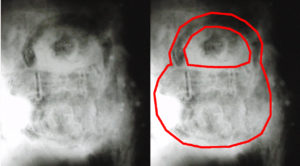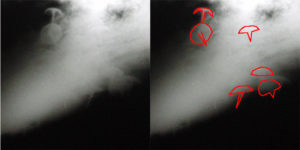While our beautiful new Maritime Archaeology and Education Center (MAEC) was being built, conservation was disassembled and all artifacts were put into a state of monitored wet storage. Taking those items out of storage and getting conservation back on track has been a slow and detailed process. This process requires an inventory and condition analysis of all items, as well as setting up each area of conservation in order for treatments to begin.
Though we are not quite running at 100% yet, we have made great leaps and bounds. Part of our inventory includes new items recovered from our current shipwreck, Anniversary. Since everything was essentially put straight into a holding pattern, we are just now starting to analyze the items we recovered last summer. In fact, dredge spoil from the site is still being sorted and new items are being discovered daily.
One of our biggest challenges is to discern what items, if any, are contained within the concretions we recover. Conservation is expensive, so we must focus on items that can answer certain research questions, like the time period or the nationality of the vessel. One way for us to do this is through X-ray analysis. While x-rays won’t show 100% of what is contained within a concretion, they do show us a lot visually and help us narrow our conservation focus.

X-rays allow us to look into concretions without damaging the items inside. This particular X-ray shows a padlock.
Due to the generosity of Doctors Eric Searcy, DMV and John Yselonia, DMV at Antigua Veterinary Practice, we can now begin to take our own x-rays! They donated their previous machine for us to use in our MAEC building, and we have just begun to analyze last summer’s concretions.

Over 25 brass tacks were found using our new X-ray machine!
Our very first in-house X-ray proved to be exiting for more reasons than just being our first X-ray. Inside the concretion are more than 25 brass furniture tacks, something we have not encountered on our previous wreck sites, and an iron padlock. We are uncertain if either of these items will help us better date or identify this wreck, but it is always exciting to reveal what history has left us.
Contributed by Director of Archeological Conservation Starr Cox, edited by Social Media Specialist Daniel Lee

